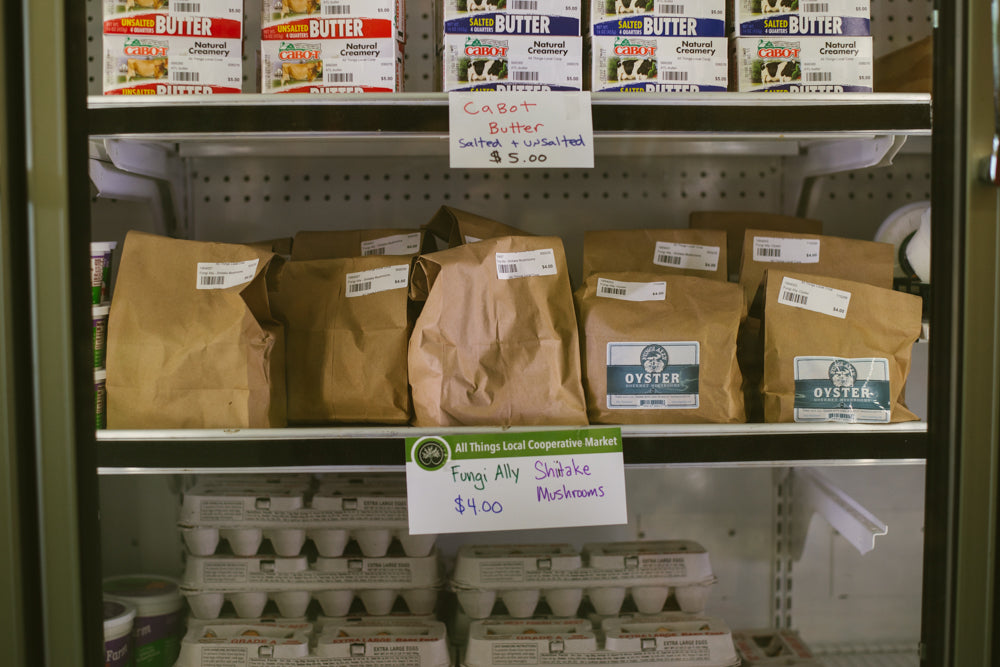It is important to know how to store mushrooms properly because mushrooms that were stored improperly can lead to instances of mushroom poisoning
In the United States there is a massive fear around mushroom poisonings. Interestingly enough, a vast majority of poisonings DO NOT come from the misidentification of mushrooms, but because people do not know how to store mushrooms. According to a study conducted in Poland, over 88% of mushroom poisoning cases were based on improper storage. "The analysis of the circumstances of mushroom collection, transport, and storage shows that the largest percentage of poisoning was connected with long-term storage of mushroom dishes, collecting, and storing them in plastic bags, and long storage of mushrooms."
The study found that of the 457 cases studies, 400 of the poisonings were from edible mushrooms! A big take away from this is you need to know how to store mushrooms properly! Storing mushrooms in plastic bags prevents the mushrooms from breathing and causes rapid growth of bacteria. Mushrooms are in their own kingdom, known as the Fungal kingdom, which is completely separate from the plant kingdom. Many plants can be stored in plastic bags easily for many days before rotting but mushrooms need to breath to remain viable for human consumption. In order to be stored properly the mushrooms need to breath, slowly drying out rather than conserving moisture. Some grocery stores offer plastic bags for customers to take mushrooms home in but you should never store mushrooms in a plastic bag. If you are at the grocery store or farmers market be sure to put your mushrooms into a paper bag for storage.

Knowing when stored mushrooms have gone bad
Mushrooms, like many foods, should be thrown out if they become slimy. There are some wild mushrooms that have a slimy consistency when they are harvested. For the most part though, if a mushroom is slimy or has a black decay on it, remove that part and compost or compost the entirety of the mushroom. It is simple to store mushrooms in the fridge. To do so, I take a small paper bag and place the mushrooms in the bag. Then roll the bag down so it is folded over and closed. Keep the mushrooms anywhere in the fridge and they will stay good for 5-10 days depending on the species and condition. If you do this properly, the mushrooms dry out over time and become dried mushrooms! The mushrooms are still good to use in culinary dishes -- they just need to be rehydrated before using. My favorite thing is to make a miso soup with shiitake or oyster mushrooms that have been in the fridge for too long.How to store mushrooms commercially
When growing mushrooms commercially proper storage is crucial. The mushrooms need to be stored where they can breath but do not have excessive airflow that will quickly dry them out. Once harvested the mushrooms should NEVER GET WET. It is important even when you are harvesting them that the mushrooms are not excessively wet. If they are it will lead to bacterial and viral growth and the need to compost the mushrooms before selling them. At Fungi Ally we use bulb crates, shown below, to achieve the perfect balance of air flow and prevention of drying out. If, as a grower, you want to move as efficiently as possible, the best answer for storing mushrooms is to place them in the box they will be sold in. These are typically three, five, or 10 pound cases that are made of cardboard. Produce pint boxes work very well for 3-5 pound cases for most species of mushrooms. Typical cardboard shipping boxes also work just fine for storing and shipping mushrooms and tend to only cost around .60 each.
How to store mushrooms by drying or freezing
Drying mushrooms allows them to be stored and usable for a longer period of time than having to use them when fresh. For instance, if you grow mushrooms during the fall and end up with a big yield, or you find a big flush while foraging during the same time of year, you can dry these mushrooms to have delicious food to eat all winter long.
Drying mushrooms is a great option when you have an abundance of them. The drying process can be as simple as laying the mushrooms out in the sun to dry, or putting them in a dehydrator overnight at around 115 – 120°F. They will be properly dried once they become slightly crispy like a chip. The best way to freeze most mushrooms is to cook them before putting them in the freezer. This can be done by blanching, steaming, or frying.
Freezing mushrooms requires some preparation. Start by selecting the mushrooms you want to freeze. Cut off any spots of decay and gently clean the mushrooms by either washing gently or by dry brushing with a mushroom brush. If you are dealing with very large mushrooms, be sure to cut them into smaller pieces. Mushrooms of 1” across or smaller will be the best size for freezing your mushrooms. Then you need to cook the mushrooms. Regardless of the cooking method you use, it should take between three and five minutes, depending on the size of the mushrooms. Once you have quickly heated the mushrooms, set them aside to cool and drain any excess liquid. Once drained and cooled you can package, seal, and place the mushrooms in the freezer.


